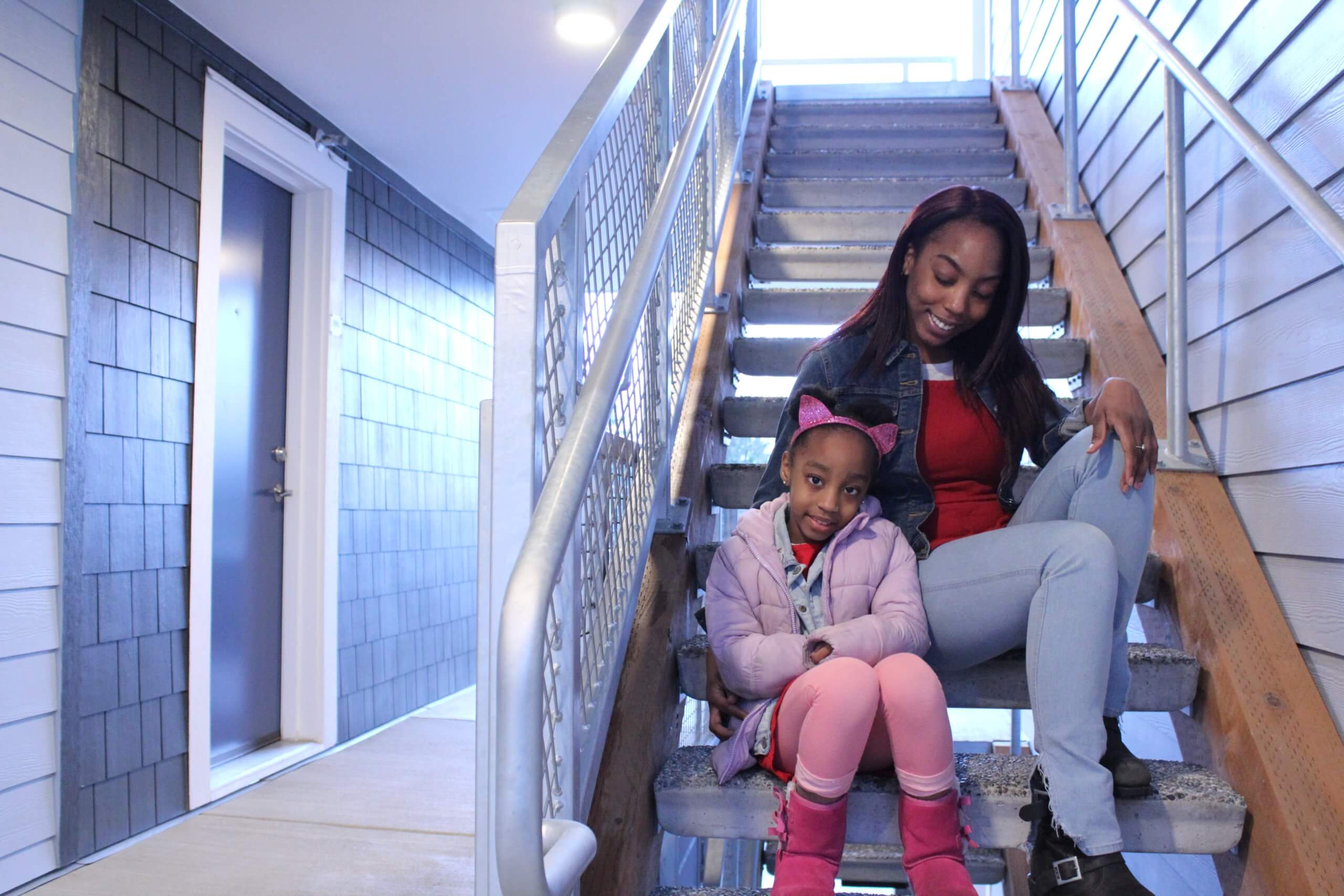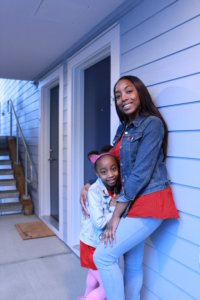
By the mid-2000s, the King neighborhood of northeast Portland was in the thick of transitioning from a majority non-white and historically Black area to a majority white one. For then-12-year-old Jennifer, even the shifting color of the King neighborhood was still a radical, welcoming, life-changing difference from how she’d grown up.
“I mostly grew up in suburban areas. I felt a disconnect most of the time because my siblings and I were always the very few black kids in our schools,” Jennifer says. “My family moved to Portland in 2004, and from what we were told, we arrived sort of right at the start of gentrification in that neighborhood.”
The winds of gentrification
For decades of Portland history, neighborhoods like King had been a bastion of the local Black Portland community, an arrangement not of happenstance but directly due to institutionalized redlining and discriminatory housing policies. Still, Black Portlanders created community where they could, fostering vibrant neighborhoods and civic life. But starting in the 1950s, the city’s myriad urban renewal projects in its north and northeast quadrants systematically dismantled and destabilized Black communities.
Decades downstream in the early 2000s, north and northeast Portland became ground zero for gentrification, attracting people and investors from elsewhere with higher incomes, resources and political heft than the average Black resident. Between 2000 and 2010, nearly 10,000 Portlanders of color, mostly Black, moved out of the Portland’s central neighborhoods, including communities like King. Though some moved on their own accord, most were pushed by skyrocketing rents and property prices toward East Portland, where housing costs were relatively more affordable.
Jennifer would often follow her friend two blocks out of the way off NE Killingworth, a main thoroughfare in King, to walk past a particular house. Her friend would explain, in almost hushed tones, that it had been her grandmother’s family home. Had. Yet her friend was drawn back to the property, over and over again, with Jennifer in tow.
Her friend never spelled out the circumstances of why the home didn’t belong to her family anymore, but the massive displacement King residents had been witnessing—at least those still there to witness it—provided plenty to read between the lines.
Still, the historic residents of King were resilient, preserving their community bonds even as neighbors steadily moved out.
“Compared to where I was used to living, I felt like I could still connect with our culture more, be around more Black people than I’d ever seen. I came to know the neighborhood and it felt really good to be around people like me. I felt so normal there. I didn’t stand out. I mean, it felt like home.”
That sense of home eventually faded as the winds of gentrification caught Jennifer’s family. They moved several times before Jennifer and her siblings went off to college, closer to the city’s outer limits with each subsequent move.
Jennifer first went to college at Western Oregon University. There, she gave birth to her daughter, Cambria, and soon transferred to Portland State University. As she approached graduation, she started looking for housing in the city and quickly realized that rents were out of her reach. She and her two sisters eventually found a home in East County.
“But I really wanted to find a way to get back to northeast or north Portland because I was so familiar with it. I was so familiar with my old neighborhood and I love the layout and things are so convenient.”
Addressing harm
After a few years in Gresham, Jennifer heard about the Portland Housing Bureau’s N/NE Preference Policy, a “tool to begin addressing the harmful impacts of this legacy [of marginalization and displacement] by prioritizing families and individuals with generational ties to N/NE Portland for new affordable housing opportunities in the area.”
Months after submitting her application, Jennifer received a phone call that offered her a two-bedroom apartment in CCC’s Charlotte B. Rutherford Place. “It was such a relief,” Jennifer recalls. “I was in a little shock. I was grateful. It meant so much that I’d be back so close to my old neighborhood and be able to live on my own—to afford to live on my own—with my daughter.”
“It was emotional because I realized that I didn’t just want this for myself; I wanted it for my daughter, too. I wanted her to see Black people, to be able to go to schools that were more mixed, where she saw people like her. Being back in the neighborhood would affect all that.”
A place to call home

Today, Jennifer and Cambria make their home in a third-story apartment at CCC’s Charlotte B. Rutherford Place, located in the Arbor Lodge neighborhood, just slightly more than a mile west of King. Opened in December 2019, the affordable housing community project figured intentionally into CCC’s targeted efforts to meet the housing and health needs of African Americans.
At the grand opening, CCC President and CEO Dr. Rachel Solotaroff said, “We’re so proud that Charlotte B. Rutherford Place opened under the N/NE preference policy, opening up housing access to people with historical ties to neighborhoods that were once predominantly black, but targeted with an urban renewal plan that didn’t include those who had created their community here.”
Though there to celebrate, Dr. Solotaroff spoke to the modesty of the effort relative to systemic injustices.
“Neither Charlotte B. Rutherford Place, nor the housing preference policy, are magic wands that we can wave to undo racial and generational traumas and injustices. But they are steps in the right direction.”
The Hon. Charlotte B. Rutherford added: “I am even more heartened to see the City recognize its callous treatment of the Black community in the past and attempt to make amends by providing preferences to come back for those families who have been displaced over the years.”
Just the beginning
Projects like Charlotte B. Rutherford Place are just the start of righting past wrongs, and no one, including Jennifer, is under the belief that these policies and projects will revert northeast and north Portland to what it once was.
“I’m always reminded that this is not the exact neighborhood I grew up in. It’s always in the back of my mind. I know that,” Jennifer says. “But still, I hold so many sentiments with different parts of this area. To me, it doesn’t matter who’s there now. I still have memories of those places.”
Now living in a neighborhood that’s simultaneously familiar and foreign, Jennifer feels invigorated by fellow Black Portlanders wrestling with the same tension. There’s a renewed effort, she feels, between Black Portlanders making their way back to historic neighborhoods and those who were able to remain there in the face of urban renewal projects and gentrification. She feels that there’s a buzz to regrow and reestablish a community, to connect the past to the future.
“Until I moved to Portland, my understanding of what it meant to be Black really came from TV and what I was taught in school because I did not have a community I belonged to outside of my immediate family. I’m excited that my daughter can grow up in a community with people who look like her and where she feels represented. I’m also excited to work with people to process what’s happened in Portland and what we want it to become.”